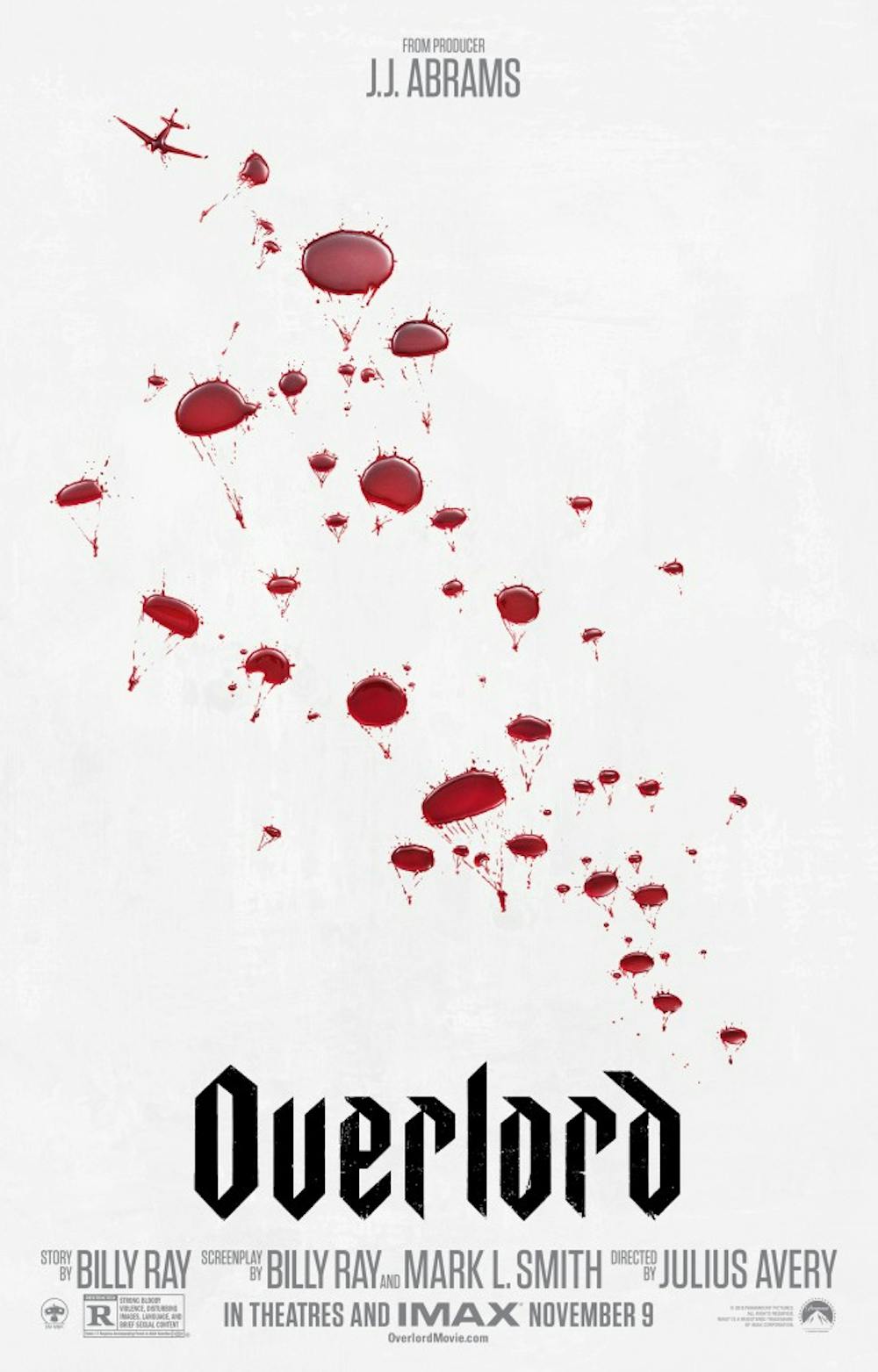Overlord is everything you’d expect in a WWII–zombie–flamethrower–mad–doctor–thriller–horror film. It follows Boyce, an American soldier, and three other members of his paratrooper squad: Corporal Ford, Tibbet, and Chase. Their mission is to destroy a German radio tower located in an old church in a French city. As the soldiers attempt to carry out their order, they rope in a French girl, Chloe, to help them, and witness Nazi atrocities, human experiments, and an awful lot of (subjectively digestible) body horror.
Overlord promises pale–skinned, shiny zombies and a man with half his face ripped off, as per the movie’s trailer, to freak the viewer. But to be frank, white and shiny are pretty standard when we’re talking about immortal, man–made (or man–tested) armies of identical looking test–tube soldiers. Remember those zombies in I Am Legend (2007)? What about the husks in Mass Effect? Or maybe the mannequin soldiers in Fullmetal Alchemist: Brotherhood? These portrayals of humanlike (mostly human–turned) zombies differ slightly in design, but all act as similar plot points. Strange creatures chase the protagonist! The faster your heart races, the faster he runs! Get pumped!...is what they’re trying to do, in both Overlord and every other piece of zombie entertainment.
I can continue down this comparison road and prove that Overlord is just a Resident Evil 7–Wolfenstein–Outlast amalgamation of a movie, but I must also devote some time in listing the ways in which Overlord will snuggly cuddle up to your low expectations. Over–the–top gore that somehow involves a talking head? Check. A familiar main character who’s got a stronger moral compass than the leader of the team? Check. Chase scenes through narrow tunnels? Ah, uh, another check. Double check to that one. I had an impression of Overlord going in, and it definitely returned the favor.
Yet above all, above everything, here’s the big issue with Overlord: I liked it. I’ve seen crazy, dirty labs led by an evil doctor performing experiments on humans before. Simple body horror involving some ripped flesh and bulging veins doesn’t faze me. Yet Overlord was able to not only embrace its trope–filled B–movie–like facade; it was able to take it in stride. The movie doesn’t try to be a think piece that forces the viewer to review their own morals and understanding of the world around them. It doesn’t try to be a revolutionary, new horror film that changes the way the genre is looked at forever. Overlord proudly presents itself as a movie that’s meant to feel familiar to the horror community, that’s meant to let you turn off your brain and just freak out for a bit with the occasional warm, fuzzy, feeling of déjà vu hitting you in crucial moments.
I will admit, though, that despite its mindless front, Overlord did leave me feeling a bit more than just jazzed–up at the end. The movie juxtaposed scenes of realistic, wartime death by grenade and land mine and the graphic loss of team members with a light–hearted ending scene, where Boyce seems to have gotten over his fear of death and reveals that he wants to continue fighting in the war. The portrayal of human experimentation by the Nazis as something so outrageous and supernatural also inappropriately treats the real instances of human experimentation by Nazis during WWII as such. Overlord is violence desensitization culture in a nutshell, and I can’t say how suitable a movie like it is in today’s increasingly violent climate.
But I suppose the same can be said for most movies of the gory genres, many of which I still love, and I think it’s all right to still love. Just know what you’re getting into: with the right mindset and an appropriate grasp on WWII history, Overlord can still be enjoyed.

